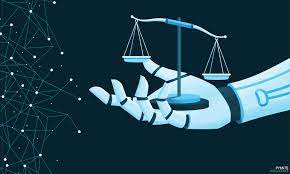This article explains how students can Check the Plagiarism Percentage of Their Academic Papers.
Introduction
If you’re on this article, then chances are you already know what plagiarism is. The students starting their educational journey, however, are mostly unaware of this phenomenon. Actually, they are aware, but they don’t know that there’s an official word for “don’t copy your classmates’ homework. We will know”. It’s called plagiarism and it is rough.
Plagiarism is using/presenting someone else’s work as your own without giving rightful credit to the original author. Figuring out that parts of the academic paper are plagiarized is easy if the students willingly used someone else’s work and didn’t pass credit. They know their paper is plagiarized.
Exactly how much plagiarism is present in academic papers is the tricky part for educators when conducting plagiarism checks manually. Manually checking for plagiarism isn’t reliable for three reasons.
- It’s time-consuming
- It can be inaccurate as the exact amount of plagiarism cannot be determined
- It may not even be plagiarism when and if you take into consideration other people’s points of views
Students should know the exact amount of plagiarism present in their work, preferably in percentage form. That’s the format we’re going for and it’s how educational institutes determine whether a particular paper is acceptable or not.
For that reason, we will define what academic papers so we know what counts as one and how students can check their papers for plagiarism percentage.
What Are Academic Papers?

Academic papers are formal documents written and submitted by students, researchers, and scholars alike to present the results of their original study or research. The original work is on a particular topic or subject in a field of their choosing.
Academic papers are primarily focused on sharing new information or discoveries. Given the weight of potentially how important a single academic paper can be in terms of contributing something new in the field, plagiarism checking is required.
Exact accurate numbers are needed to determine if the paper is worthy of being published in academic journals. Let’s look into how students can check for plagiarism with online tools for greater accuracy and time-saving.
Determining Plagiarism Percentage Through Plagiarism Checkers
It’s the best, most efficient, and most objective way of calculating the exact percentage of plagiarism in your work. Plagiarism checkers are the go-to method for teachers to detect copied work and for students, a sigh of relief or terror depending on the outcome.
The reason I gave preference to plagiarism detectors over manual detection is the simple fact that online tools just simply have a large database to scan from. People can turn this menial task into a laborious one if they do it by hand.
The point of technology is to turn laborious work into menial one to focus on other important stuff, I don’t know why no one would use it. Now that the stage is set, let’s focus on the kind of online tool that’s needed for this special task.
This is indeed a special task with outcomes that can cause ripples in the respective fields if the material is ground-breaking. You would need a plagiarism checker online tool that has unabated access to billions of online resources plus affiliation with most educational institutes.
It’s the only way a tool can successfully come up with percentage numbers if it has access to that amount of data. The tool shown below is affiliated with ProQuest and uses deep search (think of it like Google advanced search) to come up with percentage numbers.

This is the percentage rating of an academic paper that one of my students is contributing to regarding the effects of AI technologies to detect and remove plagiarism. The 1% is a definition that he took from the internet but didn’t cite.
The best part is that it didn’t even take ten seconds for it to come up with the results. It is perhaps due to the tool only looking for exact match scenarios but it’s just a theory and the tool hasn’t said it.
Conclusion
Knowing the plagiarism % of your academic paper is important in part due to the nature of your work. General writing tasks are allowed a leeway of 15%. Academic papers though only give as much as a 5% pass. Anything above is considered intentional plagiarism and is grounds for your paper to be dismissed.
A bit of life advice even if you didn’t ask for it but I must share it as a professional and adopt this habit of minimizing plagiarism from your work. I know the temptation is there and it can be easy at times if you know how to trick the systems. Trust me though, it won’t take you far.
Use online tools to check plagiarism percentages and work on removing plagiarism as you go. You will gain discipline and ethics which will take you very far in life.




Leave feedback about this